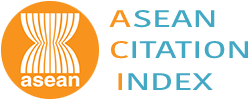Role of Osteopontin in Hypothyroid Anemic Woman and Their Association with Oxidative Stress
Abstract
Background: Hypothyroidism is frequently associated with anemia and oxidative stress, necessitating exploration of biomarkers like Osteopontin to better understand disease mechanisms.
Objective: To explore the association between Osteopontin, oxidative stress, and antioxidant capacity in hypothyroid woman with or without anemia.
Methods: The study was conducted at the Santosh Medical College Department of Biochemistry in Ghaziabad, India, from September 2019 to October 2021. This study was cross-sectional and recruited 360 female subjects, divided into three groups: hypothyroidism with anemia, hypothyroidism without anemia, and normal healthy controls. Osteopontin, thyroid profile, malondialdehyde (MDA) and total antioxidant capacity were measured.
Results: Osteopontin, T3, T4, and total antioxidant capacity levels were significantly lower (p<0.001), and the TSH and MDA levels significantly increased (p<0.001) in female subjects experiencing hypothyroidism, with or without anemia, as compared to normal healthy female control groups. Osteopontin demonstrated significant negative relationship with TSH and MDA, while showing a significant positive relationship with T3, T4, and total antioxidant status in both studied groups.
Conclusion: Osteopontin and oxidative stress/antioxidant status significantly correlate in female subjects experiencing hypothyroidism, with or without anemia. In these patients, Osteopontin might be a useful biomarker for evaluating antioxidant levels and oxidative stress.
Keywords
Full Text:
PDFDOI: https://doi.org/10.15850/ijihs.v13n1.4099
Article Metrics
Abstract view : 415 timesPDF - 97 times
This Journal indexed by

IJIHS is licensed under a Creative Commons Attribution-NonCommercial 4.0 International License
View My Stats




